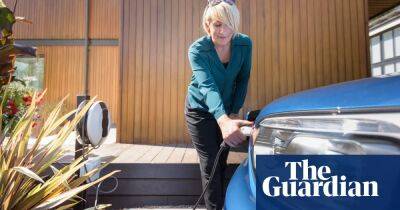High costs and uncertainties cast a chill over Britain’s heat pump market
Cutting carbon emissions in the home is a key part of the UK’s drive to meet net zero climate targets and one of the most promising alternatives to a domestic gas boiler is a heat pump, which uses electricity to channel warmth from the ground or the air into the home.
Yet although heat pumps can transform 1 kilowatt of green electricity into 3kW-worth of heat, their benefits have been overshadowed by concerns about cost, and uptake has been low.
The government’s aim is to have 600,000 heat pumps a year being installed by 2028. But only 55,000 were fitted in 2021, while 1.5m gas boilers were installed.
A £450m scheme offering grants of £5,000 towards the cost of a heat pump was launched last May to a tepid response. Figures released last week by Ofgem show that by the end of March the scheme had only managed to give out slightly more than a third of the grants available for the financial year. It issued just 11,996 vouchers out of the 30,000 available, of which 9,981 were redeemed – equivalent to £50.16m of the £150m of grants on offer annually for the next three years.
So why has the UK’s home decarbonisation strategy gone cold and what can be done to restart it?
The blame for the “disappointingly low” take-up lies mostly with the government, according to a recent parliamentary report. In a letter to ministers, the House of Lords environment and climate change committee said public awareness of low-carbon heating systems was “very limited” and promotion of the scheme had been “inadequate”. A shortage of installers and “insufficient independent advice” were also hindering take-up, the committee said.
In simple terms, an electric heat pump works like a reverse fridge, extracting warmth from the outside air, the ground or a
Read more on theguardian.com

















